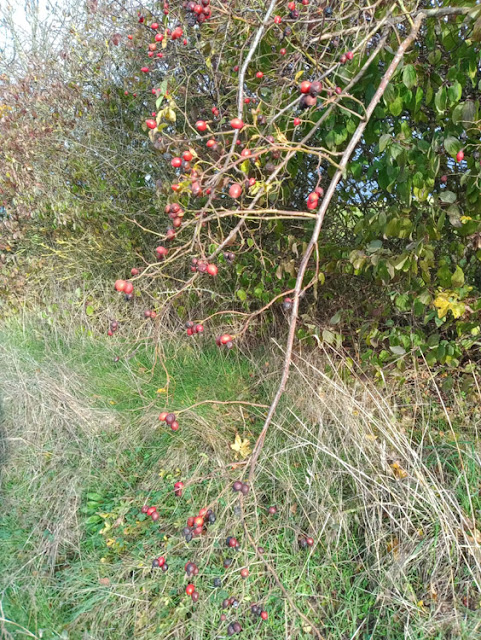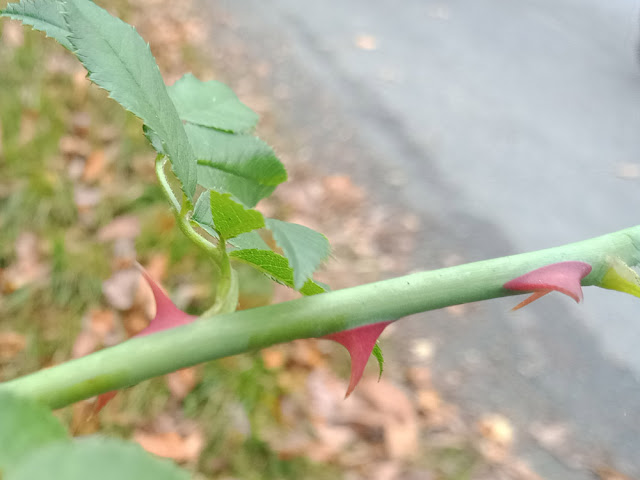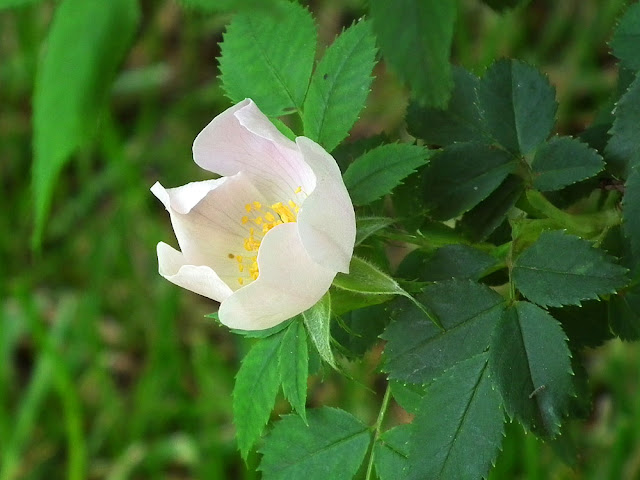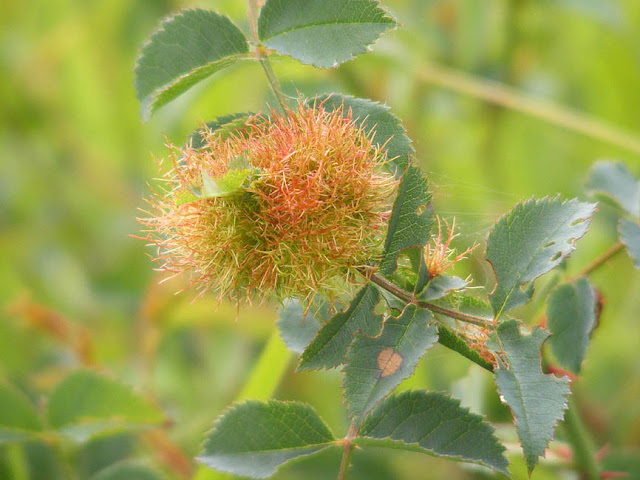Dog Rose Rosa canina (Fr. Rosier des chiens).
This is an abundant species in hedges and woodlands, especially in the lowlands. It has several ecotypes, or subspecies that have evolved to grow in different habitats or conditions. Many pink flowering cultivated rose varieties have R. canina somewhere in their ancestry. The species always has single (or simple) flowers.
The name Dog Rose comes from the ancient belief that the root could be used to cure the bite of a rabid dog. The rosehips are called grattes-culs ('scratch arses') in French because the hairs inside could cause itchiness around the anus if you consumed badly prepared rosehip tea, jelly or syrup, once important tonics and sources of Vitamin C when other things were scarce.
The plant can grow up to 5 metres, in long arching canes with very prickly back curving thorns. They produce pale pink or white flowers in May and June and are pollinated by insects. The seeds are dispersed by birds.
One of the reasons Roe Deer are attracted to your garden and will eat your rose shoots and buds is because they grow up eating the wild Dog Roses in the forest and they are a favourite food.
The species is native to all the temperate zones of the Old World and naturalised in the New. Globally it is abundant, up to 1600 metres above sea level.
It is heat (but not dry) loving and grows in a range of neutral to calcareous soil, tolerating lightly acid soil, but not waterlogged soil.
Both flowers and leaves are scented, especially if crushed. It is one of the species used in the perfume industry and in North Africa especially, for making simple culinary rosewater.
The plants are fairly disease resistant, but often have strange growths called bedeguar galls caused by a tiny wasp.
The old name for this rose is eglantine. You will still sometimes hear it called that, especially in France, but today the name is more properly given to Rosa rubiginosa.
There are two other peskily similar species of wild rose you may encounter.
Field Rose Rosa arvensis (Fr. Rosier rampant) only has white flowers and the centre of the flower (the stigmae) are some bobbles on a 'column' (Dog Rose has the bobbles but not the 'column'). It's a bit smaller than Dog Rose and flowers at the same time. It is more shade tolerant and more lime loving than Dog Rose, and not quite so frequently encountered in the Touraine. Both species have abundant yellow pollen on anthers, but Dog Rose anthers turn brown.
Sweet Briar Rosa rubiginosa has bright pink flowers and is even more sun loving and much more lime loving than Dog Rose. The stigmae are bobbles in the middle of the flower, and it is much less abundant than the other two species. It is also smaller than Dog Rose and flowers a bit later (although the two species flowering season overlaps in June and July).






No comments:
Post a Comment